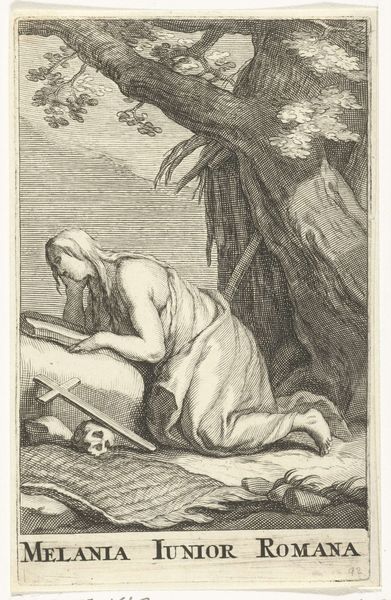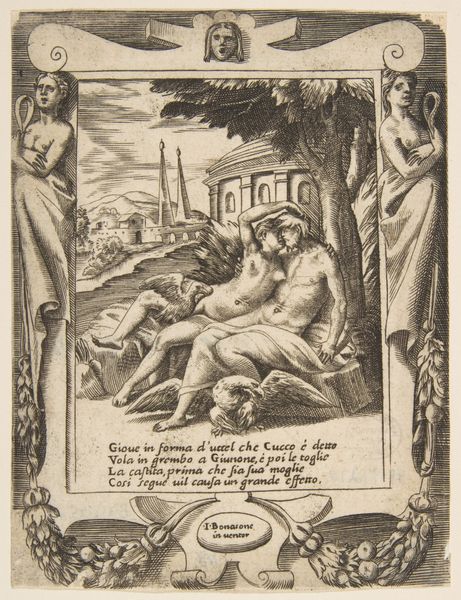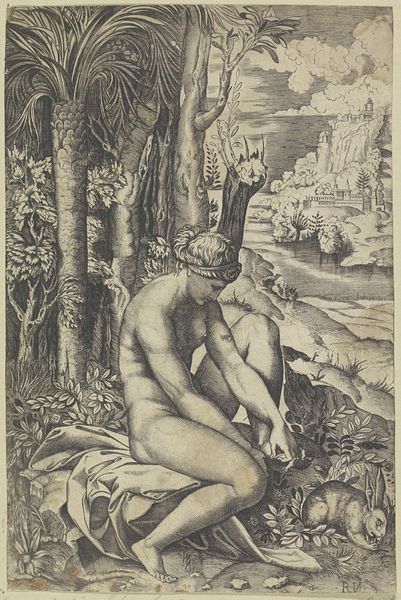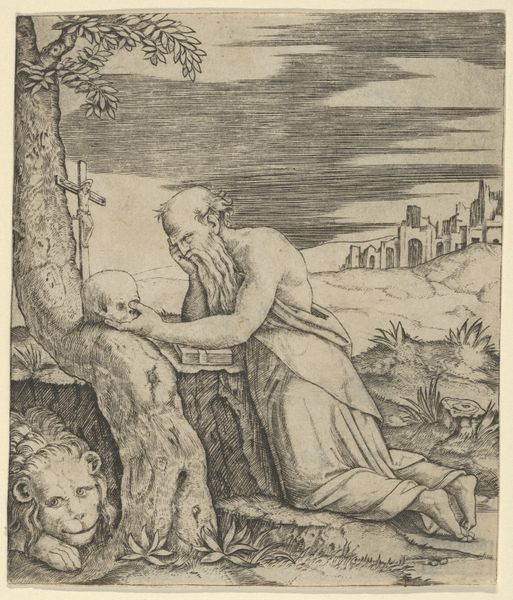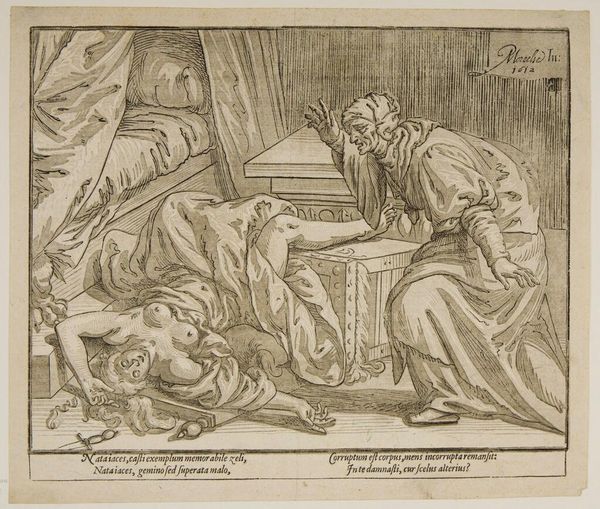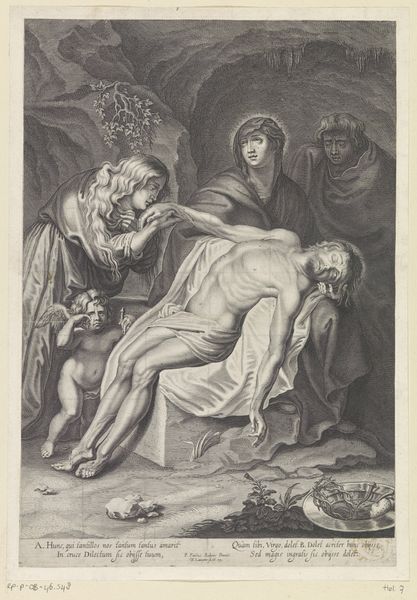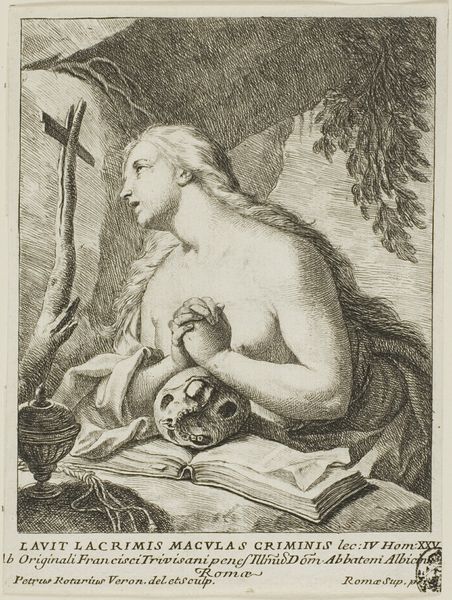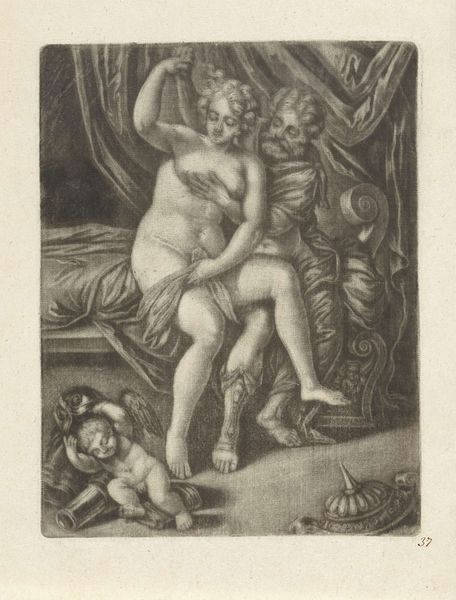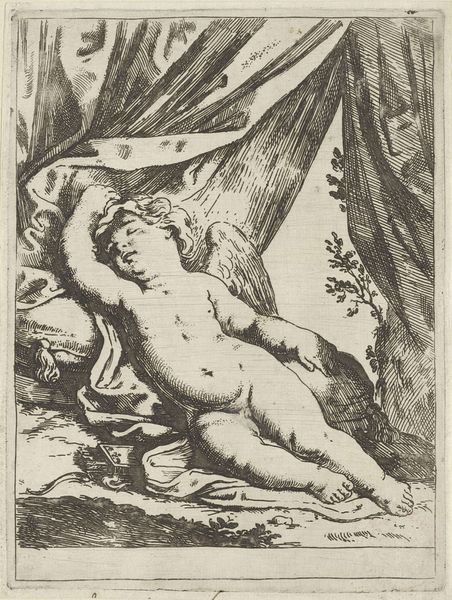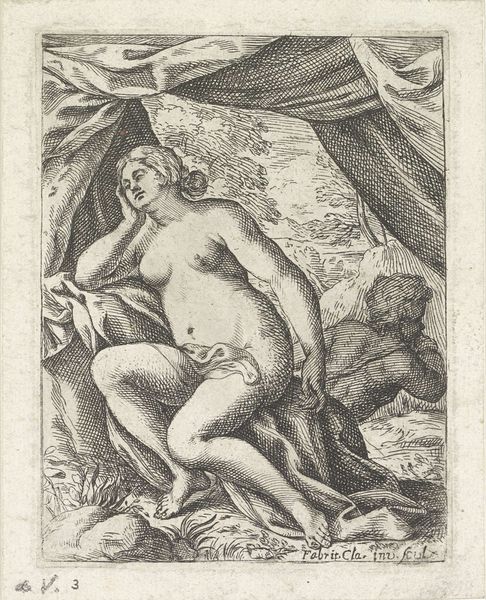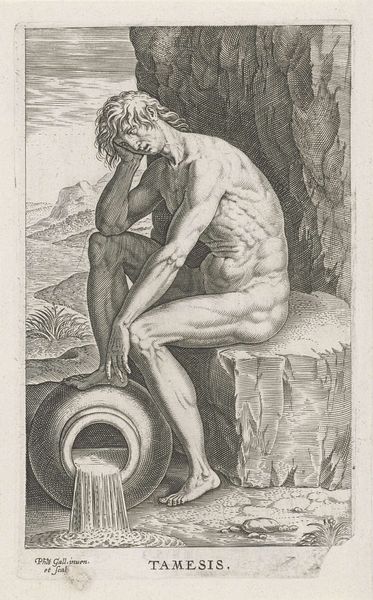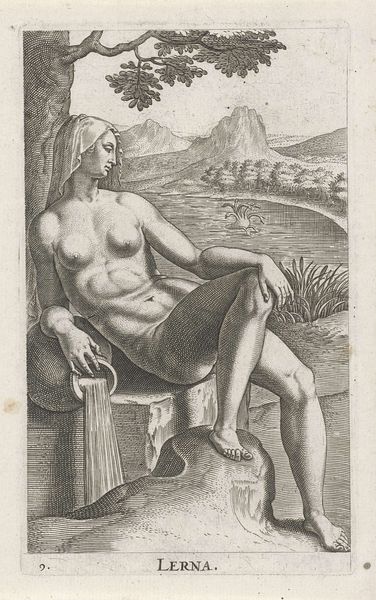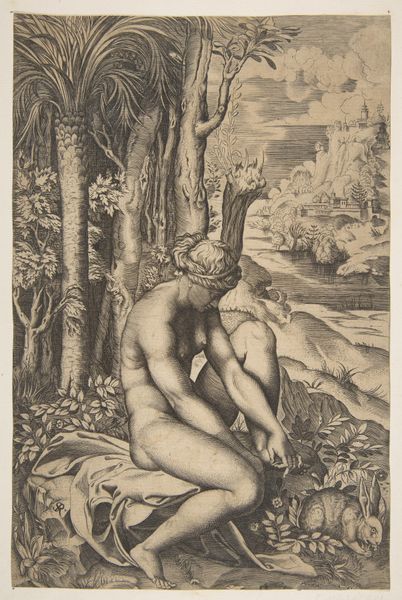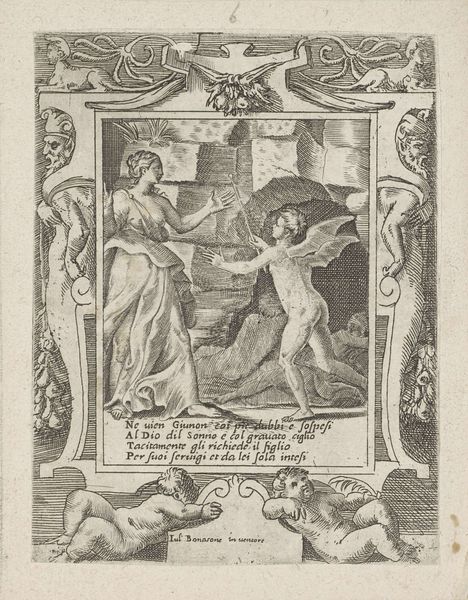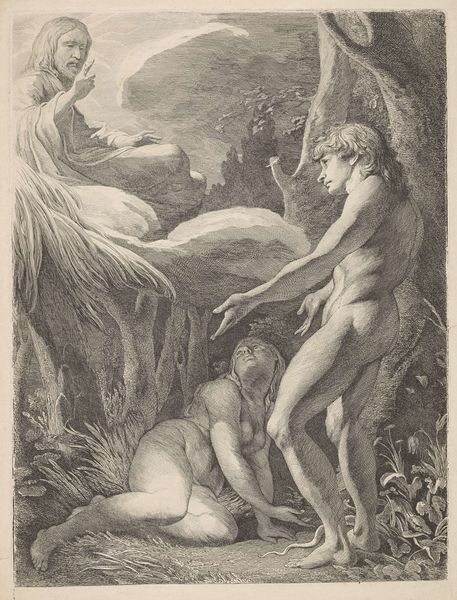
drawing, pencil, charcoal
#
drawing
#
charcoal drawing
#
figuration
#
coloured pencil
#
pencil
#
symbolism
#
charcoal
#
academic-art
#
nude
Copyright: Public Domain: Artvee
Curator: This drawing from Elihu Vedder, titled “The Magdalen,” dates to between 1883 and 1884. Vedder worked primarily in pencil and charcoal to create this somber image. Editor: My first impression is the figure is quite closed-off; huddled almost. And the subdued palette, restricted to graphite tones, certainly emphasizes a feeling of solemnity and contemplation. Curator: The Magdalene figure, often associated with repentance and redemption, is presented here in a very human state of despair. Vedder doesn't shy away from portraying her vulnerability; the slumped posture, the covered face – it all contributes to the emotional weight of the scene. Editor: Absolutely, the figure is literally draped within a sinuous textile form, positioned as almost an extrusion of the stark, unforgiving environment beyond. The layering of material interests me – pencil strokes, charcoal shading. There's a tension between the almost academic rendering of the body and the sketch-like quality of the background landscape and adjacent writing. It feels unresolved, fitting for such an emotionally fraught topic as spiritual reckoning. Curator: Notice, too, the symbolic objects arranged in the foreground, like a discarded container of ointment next to the written tablet with what appears to be lines of verse. It is the story of contrition made material in a single artistic construction. And speaking of making, Vedder merges text with image seamlessly; look at the visual rhythms in the handwriting, a balance between verbal expression and pure mark-making. Editor: Which perhaps brings the figure back to materiality, as opposed to being simply a symbol; she has weight, dimension. Vedder presents not an abstract icon, but the reality of a human’s psychological breakdown through very careful deployment of line and shadow. It's like seeing labor invested in representing sorrow. Curator: Yes, seeing her in context, we remember the broader theme of transformation; that sorrow itself has productive potential. Vedder uses historical codes to build modern emotion, still powerful for us now. Editor: Well put. Seeing the intersection between historical motifs and careful manipulation of mundane materials deepens my understanding of both the art and the labor behind conveying grief.
Comments
No comments
Be the first to comment and join the conversation on the ultimate creative platform.
